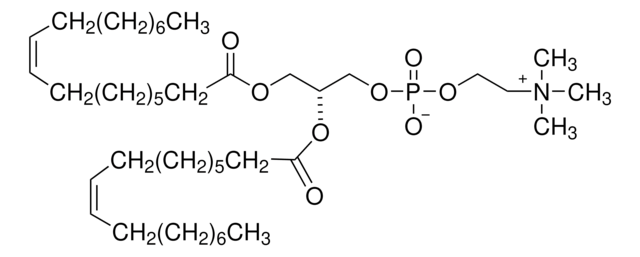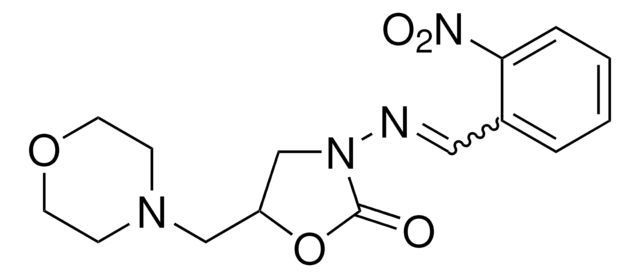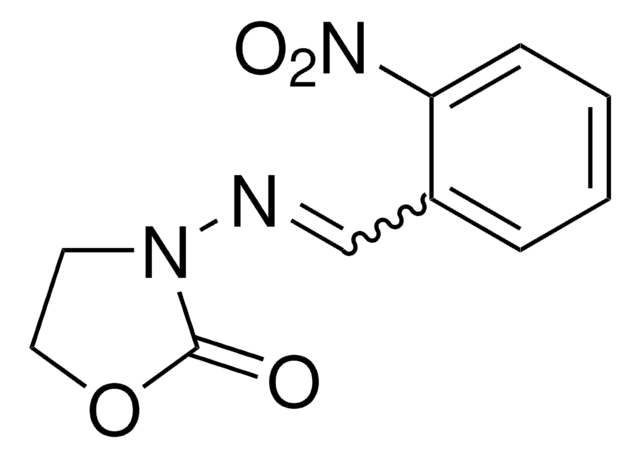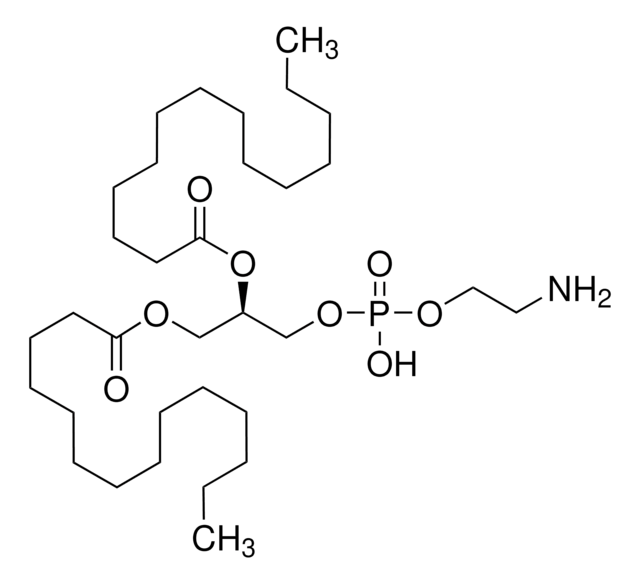42490
1,2-Dioleoyl-sn-glycero-3-phosphoethanolamine
≥99.0% (10 mg phospholipid per ml CHCl3, TLC)
Sinonimo/i:
(9Z)-9-Octadecenoic acid (1R)-1-[[[(2-aminoethoxy)hydroxyphosphinyl]oxy]methyl]-1,2-ethanediyl ester, 1,2-Di(9Z-octadecenoyl)-sn-glycero-3-phosphoethanolamine, 3-sn-Phosphatidylethanolamine, 1,2-dideoyl, L-β,γ-Dioleoyl-α-cephalin, DOPE, Dioleoyl phosphatidylethanolamine, PE(18:1(9Z)/18:1(9Z))
About This Item
Prodotti consigliati
Livello qualitativo
Saggio
≥99.0% (10 mg phospholipid per ml CHCl3, TLC)
Stato
liquid
Gruppo funzionale
phospholipid
Tipo di lipide
phosphoglycerides
Temperatura di conservazione
−20°C
Stringa SMILE
CCCCCCCC\C=C/CCCCCCCC(=O)OCC(COP(O)(=O)OCCN)OC(=O)CCCCCCC\C=C/CCCCCCCC
InChI
1S/C41H78NO8P/c1-3-5-7-9-11-13-15-17-19-21-23-25-27-29-31-33-40(43)47-37-39(38-49-51(45,46)48-36-35-42)50-41(44)34-32-30-28-26-24-22-20-18-16-14-12-10-8-6-4-2/h17-20,39H,3-16,21-38,42H2,1-2H3,(H,45,46)/b19-17-,20-18-
MWRBNPKJOOWZPW-CLFAGFIQSA-N
Cerchi prodotti simili? Visita Guida al confronto tra prodotti
Applicazioni
Avvertenze
Danger
Indicazioni di pericolo
Classi di pericolo
Acute Tox. 3 Inhalation - Acute Tox. 4 Oral - Aquatic Chronic 3 - Carc. 2 - Eye Irrit. 2 - Repr. 2 - Skin Irrit. 2 - STOT RE 1 - STOT SE 3
Organi bersaglio
Central nervous system, Liver,Kidney
Codice della classe di stoccaggio
6.1C - Combustible acute toxic Cat.3 / toxic compounds or compounds which causing chronic effects
Classe di pericolosità dell'acqua (WGK)
WGK 3
Punto d’infiammabilità (°F)
Not applicable
Punto d’infiammabilità (°C)
Not applicable
Dispositivi di protezione individuale
Eyeshields, Faceshields, Gloves
Scegli una delle versioni più recenti:
Possiedi già questo prodotto?
I documenti relativi ai prodotti acquistati recentemente sono disponibili nell’Archivio dei documenti.
I clienti hanno visto anche
Il team dei nostri ricercatori vanta grande esperienza in tutte le aree della ricerca quali Life Science, scienza dei materiali, sintesi chimica, cromatografia, discipline analitiche, ecc..
Contatta l'Assistenza Tecnica.














